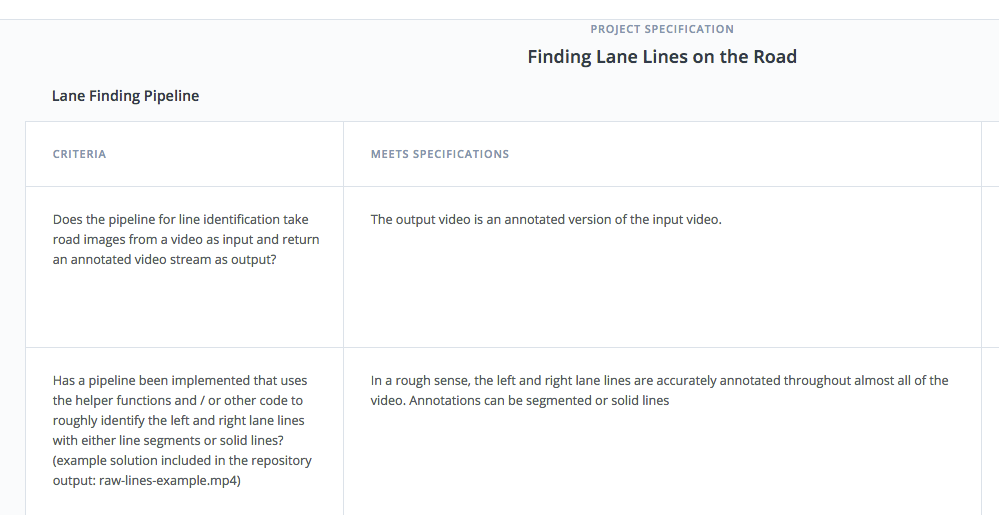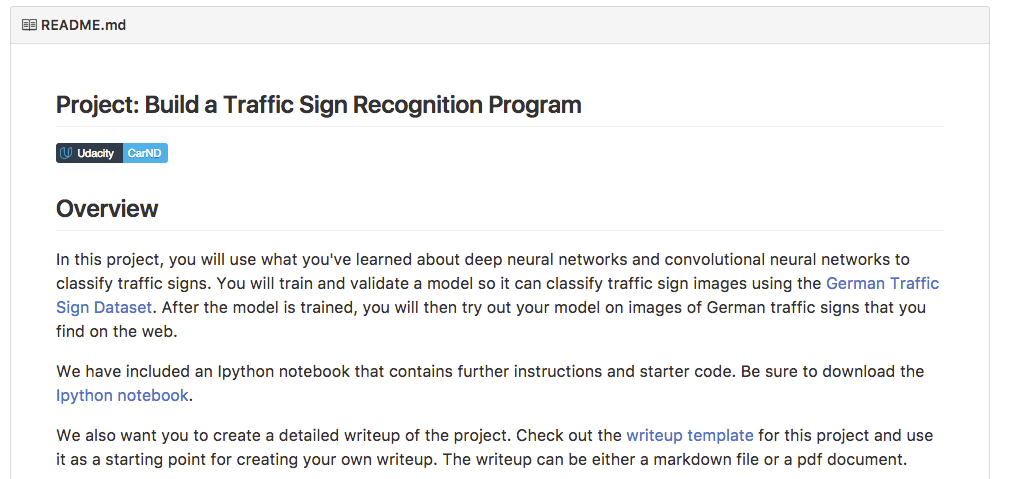04. Project Expectations
Project Expectations
For each project in Term 1, keep in mind a few key elements:
- rubric
- code
- writeup
- submission
Rubric
Each project comes with a rubric detailing the requirements for passing the project. Project reviewers will check your project against the rubric to make sure that it meets specifications.
Before submitting your project, compare your submission against the rubric to make sure you've covered each rubric point.
Here is an example of a project rubric:

Example of a project rubric
Code
Every project in the term includes code that you will write. For some projects we provide code templates, often in a Jupyter notebook. For other projects, there are no code templates.
In either case, you'll need to submit your code files as part of the project. Each project has specific instructions about what files are required. Make sure that your code is commented and easy for the project reviewers to follow.
For the Jupyter notebooks, sometimes you must run all of the code cells and then export the notebook as an HTML file. The notebook will contain instructions for how to do this.
Because running the code can take anywhere from several minutes to a few hours, the HTML file allows project reviewers to see your notebook's output without having to run the code.
Even if the project requires submission of the HTML output of your Jupyter notebook, please submit the original Jupyter notebook itself, as well.
Writeup
All of the projects in Term 1 require a writeup. The writeup is your chance to explain how you approached the project.
It is also an opportunity to show your understanding of key concepts in the program.
We have provided writeup templates for every project so that it is clear what information needs to be in each writeup. These templates can be found in each project repository, with the title
writeup_template.md
.
Your writeup report should explain how you satisfied each requirement in the project rubric.
The writeups can be turned in either as Markdown files (.md) or PDF files.
README
GitHub repositories are a convenient way to organize your projects and display them to the world. A GitHub repository also has a README.md file that opens automatically when somebody visits your GitHub repository link.
As a suggestion, the README.md file for each repository can include the following information:
- a list of files contained in the repository with a brief description of each file
- any instructions someone might need for running your code
- an overview of the project
Here is an example of a README file:

Example of a README file
If you are unfamiliar with GitHub , Udacity has a brief GitHub tutorial to get you started. Udacity also provides a more detailed free course on git and GitHub .
To learn about README files and Markdown, Udacity provides a free course on READMEs , as well.
GitHub also provides a tutorial about creating Markdown files.